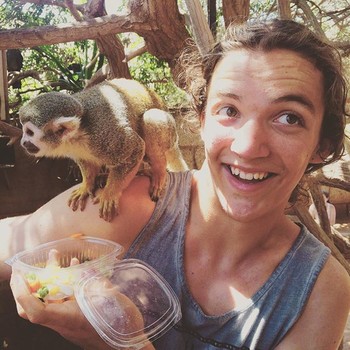How does the body change after death?
1 Answer
The body begins by digesting itself with enzymes, which leads to tissues weakening and allows bacteria and eventually larger organisms like maggots to feed on the rest of the body.
Explanation:
In death, all of the bodily processes stop. The heart stops beating and the lungs stop breathing which means blood carries no oxygen anywhere at all, so cells cannot respire for energy. With no energy, cells simply cannot move - they can't have biochemical reactions or facilitated diffusion or transport any other reaction. This puts the health of the body in a bit of a crisis.
This full-stop image isn't quite true, however. Beginning a few minutes after death the body undergoes self-digestion, where, in the lack of oxygen, enzymes in the cell digest the cell membranes and break down tissue. This begins in the liver, where there are loads of enzymes, and the brain, which is full of water.
The breaking down of tissue can release bacteria from the confines of the gut and, with the immune system entirely down, they can spread around the body. Bacteria will multiply and feed on the molecules of the body and use them for respiration, releasing waste products like ammonia, carbon dioxide, sulfides and so on. These contribute to the debris.
Putrefaction takes place when soft tissue breaks down into gases, liquids and salts. This causes blisters under the skin that fill with gases. The weakened integument (skin) then falls off, rips or even bursts if the pressure inside is great enough. Putrefaction is accompanied with a distinct shift in the type of bacteria in the body - an invasion of anaerobic organisms will produce copious waste fluids from their digestion of the corpse.
As all the tissue and molecules break down, certain changes become noticeable. For example, rigor mortis (Latin, stiffness of death) sets in not long after death, where there is no more energy left in the body and so the two proteins that contract muscle, actin and myosin, cannot move and are locked into position, causing the joints to stiffen.
Also, the digestion of haemoglobin by bacteria leads to a waste product known as sulfhaemoglobin, which is released back into the bodies environment and clusters at the gravitational bottom (blood vessels have decomposed too, so blood just sits around with everything else), forming green-black blotches, due to the colour of sulhaemoglobin. This indicates that the body is presently undergoing active decomposition.


